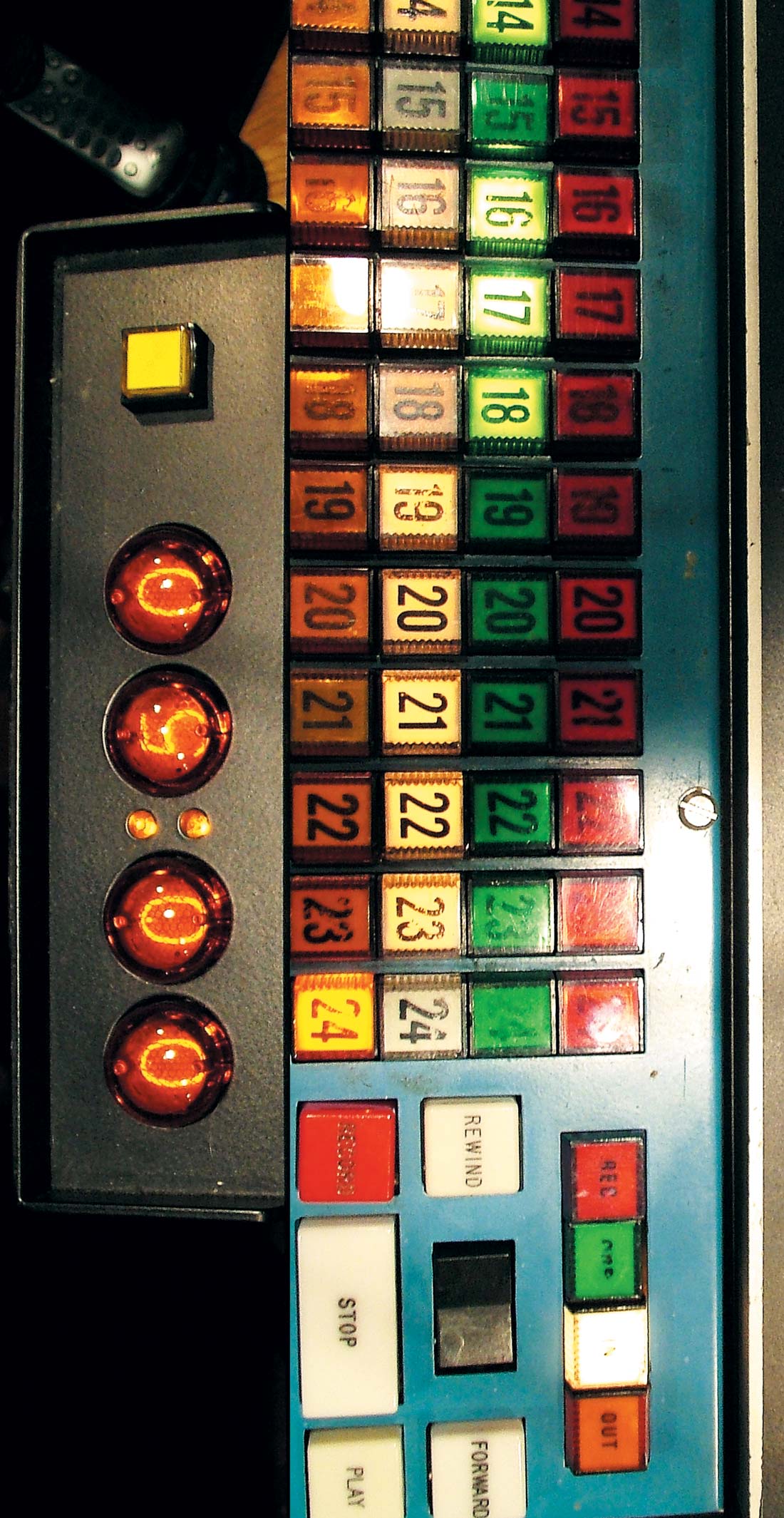By now, many of you are familiar with the MP1 series of mic preamps from OSA (see Tape Op #33). For those of you who are not, these preamps are based around the familiar API 500-series form factor and share the same size and pin-out, making them compatible with existing boards and racks. OSA also makes its own powered racks. The current OSA line includes the MP1-C, MP1-A, MP1-L, and now the MP1-L3, AKA "The Big Daddy." The MP1-L3 takes the biggest step away from the traditional, classic, mid- 70's API sound of the MP1-C "Vintage." This new preamp is huge sounding and opens up whatever microphone you plug into it. A DI input comes standard with the L3, making it even more versatile and a better bargain.
The preamps are simple to operate with an input stage above an output stage. Wink-eye buttons control polarity, phantom power, -20 dB pad, and mic/line level. The construction is solid, and these are hand-built by OSA in the USA. What makes the L3 different than the original L is the choice of input transformer. The L uses a Lundahl 1538XL and the L3 a Lundahl LL7903-hence the L3 designation. This year's TapeOpCon featured a transformer workshop with Bill Whitlock (President of Jensen Transformers) expounding on their uses and delights. The attendees of the workshop were all the mic preamp makers who were at the conference. Now I don't know much about transformers, but it seems like they matter to pro audio (or at least used to) when it comes to accurately reproducing sound. It's a subject of much passion with these guys. So, with my head full of all this transformer information, it was a real gas to get my hands on an OSA Track Pack (courtesy of Atlas Pro Audio) with two each of all their preamps. I was able to compare the four preamp models to each other, and I discovered that I could hear the difference between the preamps and their different input transformers.
We knew the differences would be subtle, so we had to find a way to compare them equally. We decided to hook up four SM57's (as it's the only mic we have four of) and record an electric guitar. We placed the mics at even intervals (like lug nuts on a rim) inside the circumference of the speaker. Tape measures were involved. We decided to record with Pro Tools to remove any chance of the tape alignment (or lack thereof) skewing our high-school science-project test. We preset the levels by running a tone through the amp first and recording that. Satisfied that the inputs were equal, we swapped the mics around and recorded the tones again to make sure the mics sounded alike. We then recorded some basic rhythm guitar, some lead guitar, and for extra fun, some feedback.
Next, we listened back while soloing between tracks. To keep it objective, the listeners did not know which preamp was playing back at any given time. It's important to note here that they all sounded great. The more overdriven rhythm guitar recording revealed some subtle tonality differences, and I ended up picking the MP1-C as my favorite. On the lead guitar recording, we all ended up picking out the L3 as the best one. The L3 just sounded bigger and fatter and really made the notes speak. But it was the feedback that really made the L3 stand out. The L3 made a squealing and wavering feedback blitz sound full and present. It did not collapse inward and feel pinched. The open way the L3 handled
itself under extreme dynamics and SPL encouraged us to use it on drum overheads on our next session. This proved to be a good idea as the L3 handled our stereo ribbon with room to spare and really captured the full spectrum of the kit with ease.
The next basic session we did, we used the L3 for kick and snare tracking. To say the kick drum sounded big would be an understatement. It sounded massive! The bottom was extended and round but not overly boomy. The midrange of the drum was perfect. No EQ needed. The snare also sounded great, and the fullness of the drum tone was pleasing even up into the ringing upper ping of the drum. We got to do some bass overdubs for this same session so we plugged the bass into the DI input right there in the control area. Again, the L3 sounded really great, and we were all pleased with how full and natural the bass sounded. We liked it so much, we decided to retrack all the bass we had done that day and left the bass plugged into the L3 for the rest of the session.
We already knew it was great on electric guitar so we tried it on some acoustic overdubs. Once again, the L3 handled the full range of the guitar with ease. Whatever microphone we plugged into it just sounded better, and who would not want that?
Old School Audio has taken the basic 500-series style preamp to a new level with the MP1-L3. So, if you're craving that legendary modular mic preamp sound, contact OSA or its worldwide distributor Atlas Pro Audio and order up some for yourself. I can't wait to hear what OSA builds next! ($650 direct;
www.oldschoolaudio.com, www.atlasproaudio.com)




_disp_horizontal_bw.jpg)